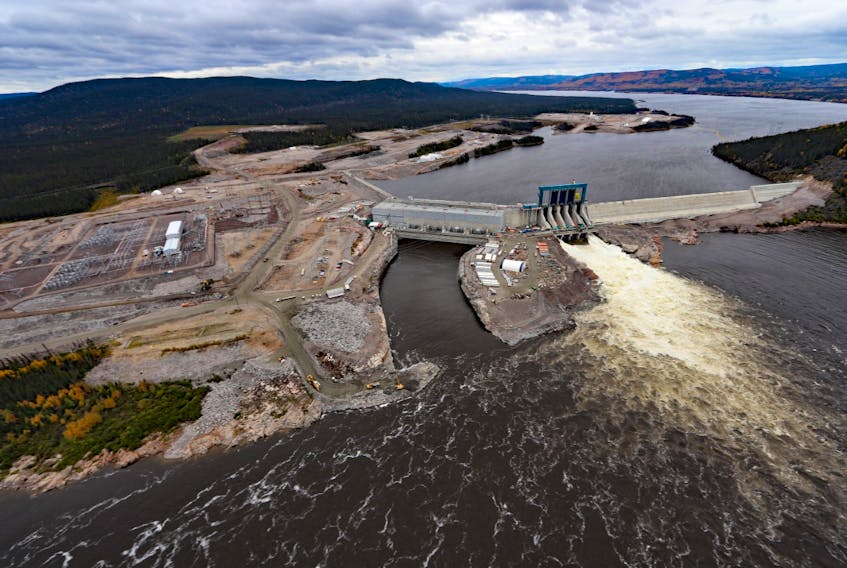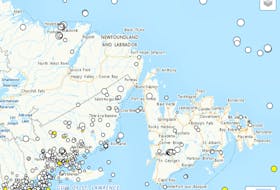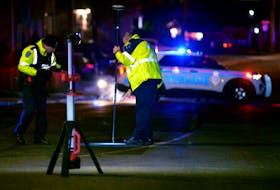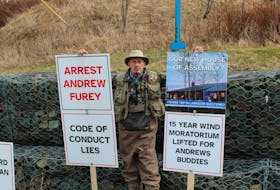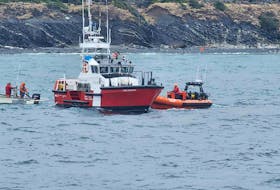ST. JOHN'S, N.L. — It’s hard to believe that 20 years have already passed since the dawn of the 21st century.
Thousands of news stories play out in any given year — the good, the bad and the ugly — and for the people affected, the impact can be joy or sorrow, guilt or shame.
We’ve seen the province change in terms of diversity, with immigration bringing more and more cultures to Newfoundland and Labrador, opening up a world of new voices and experiences.
There have been major milestones, such as the legalization of same-sex marriage by the Supreme Court of Newfoundland in 2004.
And because of the wrongful murder convictions in the 1990s of Gregory Parsons, Ronald Dalton and Randy Druken — with all three men exonerated — the 2006 Lamer Inquiry report exposed tunnel vision and brought sweeping changes to the justice system and policing.
Based on a poll of Telegram journalists and a trip through The Telegram archives, here’s 20 for 20 — a list of the biggest stories of the period Jan. 1, 2000 to Dec. 31, 2019.

Muskrat Falls
This century brought not only that dam project, but an inquiry to examine just how much of a boondoggle it was.
Originally conceived to right the wrong of Newfoundland and Labrador being shafted through its 65-year Churchill Falls hydroelectric deal with Quebec, and pitched as necessary to replace aging fossil-fuel generation and to power future industrial prospects, the Lower Churchill hydroelectric project is run by Nalcor, with a Maritime Link agreement to export energy to Nova Scotia and beyond.
Premier Kathy Dunderdale formally sanctioned the $7.7-billion project in 2012, calling it a pivotal moment in the history of Newfoundland and Labrador.
The pivotal moment stretched into years and billions of dollars in cost overruns and controversy. The promise of “rate mitigation” became a household prayer for worried residential electricity customers fearing the doubling of their power bills to pay for it all.
“Muskrat Falls has been the dominant political issue since then-premier Danny Williams announced the deal to develop the project in November 2010. While it may not win over the critics, the decision to sanction means it’s a done deal. There’s no going back,” read James McLeod’s Telegram story of 2012 marking the sanctioning of the project.
Indeed — with the cost pegged at $12.7 billion and counting, there’s no return.
The potential damage to the environment, the effect on traditional Indigenous way of life and concern about potential methylmercury poisoning sparked a movement called the Labrador Land Protectors, members of whom occupied the project worksite in 2016, prompting legal proceedings.
And, if everything else wasn’t enough, the main contractor on the project, Astaldi, filed for bankruptcy and had to be replaced.
Dozens and dozens of witnesses would be called before the Commission of Inquiry Respecting the Muskrat Falls Project, which is still wading through the damage done.
The commissioner’s report is expected at the end of March.

Breast cancer treatment scandal
The breast cancer hormone receptor testing tragedy has brought enduring heartache for many families.
About 425 breast cancer patients received the wrong results from hormone receptor tests — used to determine their treatment options — between 1997 and 2005 from what was then the Health Care Corp. of St. John’s (which in 2005 was amalgamated into the newly created Eastern Health authority).
The scandal over the errors and delays in disclosure of the problems, as well as results from new test results from Mount Sinai Hospital in Toronto, sparked the Cameron Inquiry in 2008. The damning report was released in 2009.
Eastern Health said in 2010 that 126 breast cancer patients had died since the errors were discovered, though it can never be known if the deaths were attributed to treatment decisions associated with the errors.
Eastern Health settled a $17.5-million class-action lawsuit related to the errors. That class action was led by lawyer Ches Crosbie, who went on to enter politics as leader of the provincial Progressive Conservatives.
The debacle also led to sweeping changes at Eastern Health
A 2018 Telegram special report by this reporter on the 10th anniversary of the Cameron Report — the result of the inquiry into the deadly testing errors — revealed that Eastern Health can’t provide the number of patients who are still alive after botched tests to determine breast cancer treatment, because it never tracked what happened to them as a group after the initial updates.
Women who had testified at the inquiry in 2008 and subsequently died included Elizabeth Finlayson, whose daughter Jane Hopkins remarked in 2018: “Every time I hear people having breast cancer or even cancer, it terrifies me. ...They took my mother away from me.”

Response to 9-11 and the “Come From Away” phenomenon
It was this century’s “Where were you on the day?”
That day was Sept. 11, 2001, when al-Qaida operatives hijacked four airplanes to carry out terrorist attacks on the United States.
Two of the planes were flown into the World Trade Center in New York, unleashing unfathomable horrors for the families of those who died, for survivors and first responders who dealt with the overwhelming rescue effort.
Another plane flew into the Pentagon in Washington, D.C., killing dozens of military personnel and civilians on site, in addition to those on the plane.
California-bound Flight 93 was hijacked just after leaving New Jersey. Passengers and crew on board who’d learned by cellphone and other technology of the Twin Towers attack, fought the terrorists and diverted the plane from its target. All were lost when the plane crashed in Pennsylvania.
The day’s events unfolded across the world on live TV.
Here in Newfoundland and Labrador, as well as all over Atlantic Canada, eyes soon turned to the skies, when planes ordered out of the now-closed air space prepared to land at the closest airport, leaving thousands of passengers stranded.
Stadiums, schools and other public buildings were turned into makeshift shelters. Volunteers flocked to help tend to the diverted passengers, and many were welcomed into private homes as well.
Eventually, international attention — thirsty for something good in dark times — focused on the town and people of Gander and nearby communities who welcomed 38 airliners — nearly 6,600 passengers and crew.
The attack on the Twin Towers, the Pentagon and doomed Flight 93, and the combined loss of 3,000 souls, sparked war in Afghanistan and Iraq.
But the generosity of Newfoundland and Labrador inspired a feel-good musical that took Broadway by storm — the 2017-Tony-award winning “Come From Away.”
The musical, by Irene Sankoff and David Hein (with Great Big Sea’s Bob Hallett as a Newfoundland music consultant), went on to include productions in a number of cities, including Toronto and London, England. In 2017, the Mark Gordon Company — producers of films such as “Saving Private Ryan” and “The Patriot” — announced it had acquired the rights to make a film based on the musical.

Have-not no more, then broke again
The year was 2008 and Progressive Conservative Premier Danny Williams declared it “a momentous day for the people of this province.”
Williams’ pronouncement was that Newfoundland and Labrador was pushed over the line for the first time since Confederation, coming off equalization payments from the federal government.
The dream that had been best verbalized by then-premier Brian Peckford in 1982 — ”Someday, the sun will shine, and have not will be no more” — finally came true, for awhile at least.
During the boom years, pockets made deep by the expanded offshore oil industry changed the province into a cash-rich, hip place to be, perhaps best epitomized by the packed-to-the-rafters high-end restaurants, bars and strip clubs in the capital city of St. John’s, where money seemed to flow like water.
Offshore oil development expanded from the Hibernia platform to include four major projects — Hibernia, Husky’s White Rose, Suncor Energy’s Terra Nova and Hebron, operated by ExxonMobil Canada.
The cash was also piling up from megaprojects like Vale in Long Harbour, Voisey’s Bay and Bull Arm, and from the fat paycheques brought home by long-distance commuters working the Alberta oil patch.
The construction and real estate industries were going full tilt as McMansions — subdivision monster homes with massive garages to hold all the motorized toys and pickup trucks — sprung up, as did big box stores, hotels and office towers.
Fast forward, then, to the shocking boondoggle of Muskrat Falls and the collapse of record world oil prices, which hosed the get-rich-quick opportunities in Fort Mac and St. John’s. The number of personal bankruptcies was growing faster than in any other province in 2019, and housing prices and starts were plummeting.
Newfoundlanders and Labradorians feared the province itself was facing bankruptcy, as the Liberal government grappled with deficits and diminished bond ratings.
Financial indicators show that the province is still not living within its means, as Newfoundland and Labrador auditor general Julia Mullaley reported in December.
Mullaley concluded that while the deficit for 2018-19 of $550 million is an improvement over the deficits reported in recent years, it’s still too large. Consecutive deficits over the last seven years have contributed to a substantial increase in the net debt of the province, which is now at $15.4 billion or $29,250 on a per capita basis — the highest in the history of the province.

Olympic Gold for Brad Gushue
Whether they were curling fans or not, it seemed everyone In Newfoundland and Labrador was watching as Brad Gushue and his rink competed at the 2006 Torino Winter Olympics.
Home-province pride was off the scale, through the roof and into the stratosphere.
The team — Gushue, Mark Nichols, Russ Howard, Jamie Korab and Mike Adam, along with coach Toby McDonald — scored six points in the sixth end of the gold-medal game against Finland to break open a 4-3 match and effectively end the game then and there, taking the coveted gold.
“This medal, this is big for Newfoundland. I’ve heard what’s going on back home, with the schools closed and all, and I think it’s great,” Gushue told a crush of media after the victory, chronicled for The Telegram by sports editor Robin Short.
As friends and family of each of the curlers celebrated with a pro-Canadian crowd in the 2,000-seat rink that was nearly full, Gushue reached for a cellphone less than a minute after the final stone. He was calling his mother, Maureen, back in St. John’s where she was recovering from cancer, Short wrote from Torino.
“I mentioned to Mike halfway through the last end to get my phone,” Gushue told media. “I didn’t get much in because she was crying, and that caused me to cry. But it was sure nice to hear her voice. The emotion didn’t really come out until I got on the phone with Mom. I couldn’t get close to Krista (his fiancée) or to Dad (Ray). And there wasn’t much said to her other than we did it.”
Efforts to honour the team’s unprecedented victory included the naming of the Team Gushue Highway. The Southlands section of St. John’s has streets named after each of the curlers, and a sports complex in Mount Pearl was renamed the Team Gushue Sports Complex.
Twitter: @BarbSweetTweets
With files from current and past reporters, as well as columnists Pam Frampton, Brian Jones, Russell Wangersky and Steve Bartlett.
Stories that shaped N.L. in the 21st Century: Part II
Stories that shaped N.L. in the 21st century: Part III
RELATED
- SPECIAL REPORT: The breast cancer testing scandal that shocked Newfoundland and Labrador led to sweeping change
- CAMERON REPORT: Donna Howell’s family left feeling shortchanged, 10 years after breast cancer testing scandal
- CAMERON REPORT: Elizabeth Finlayson remembered by her daughters
- CAMERON REPORT: Breast cancer testing scandal propelled passionate activism
- CAMERON REPORT: The breast cancer testing scandal in Newfoundland and Labrador affected many lives, including those working in the system that failed patients
- ANALYSIS: Muskrat Falls Inquiry evidence says we should demand better
- PAM FRAMPTON: Public the last to know the price of Muskrat Falls
- STEVE BARTLETT: Memories of 9-11 never fade
- For Brad Gushue, history is nice, but winning is what matters

